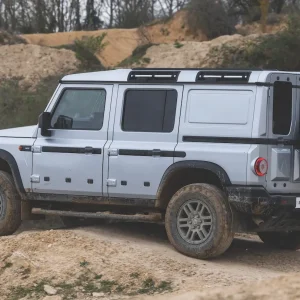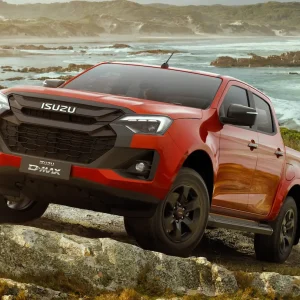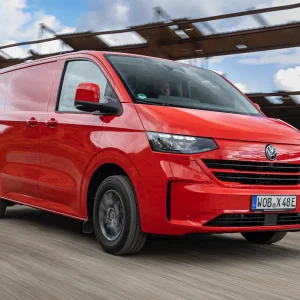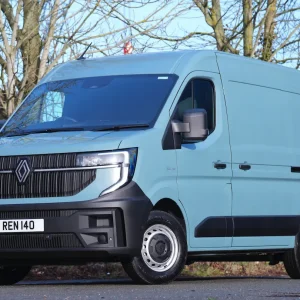Peugeot’s e-Partner is one of a trio of Stellantis group compact electric vans that went on sale in the UK in November 2021, the others being Citroen’s e-Berlingo and Vauxhall’s Combo-e. They have also now been joined by the Toyota Proace City Electric, which is built on the same platform.
Not surprisingly, all four vans are similar when it comes to driving characteristics and loading capacities.
Other than the forthcoming Renault Kangoo E-Tech, the successor to the Kangoo Z.E, which will also in time provide the basis for Mercedes’ and Nissan’s compact electric vans, the Stellantis and Toyota models have a clear field in which to establish themselves as the market leaders.
The e-Partner comes with a choice of three driving modes: Eco, Normal and Power, delivering 60%, 80% or 100% of available power. The van is noticeably quicker off the mark if you select the last of these but the pay off is that it drains the battery more quickly.
We found Eco mode to be perfectly adequate for driving around the streets and occasional dual carriageways of London but suspect performance would be affected more severely with a full load on board. We drove the panel van 50kWh Auto 800 in premium Asphalt trim and Standard length. Together with the 50kWh battery pack, power comes from a 100kW (136hp) electric motor.
The e-Partner has a claimed range of up to 171 miles on the WLTP cycle but we would not recommend banking on this without re-charging options factored in unless you are carrying a light load, keep the heating off and stick religiously to Eco mode.
Along with Eco, we also pressed the B button on the central console to make the most of regenerative braking. The affect while driving is to slow the van’s speed down more quickly when the driver takes their foot off the accelerator pedal.
The Standard panel van offers 3.9m3 of load space with Peugeot’s Multi-Flex folding seats, while Long variants increase the maximum load volume to 4.4m3.
The Standard version provides a slightly higher payload, however of up to 803kg compared to 751kg on Long versions. Overall the e-Partner sacrifices little load-lugging capability compared to its diesel sibling.
The brand’s well-specified i-Cockpit features a head-up display and flat-bottomed compact steering wheel, which enhances the electric van’s responsive and slick handling.
Asphalt trim also gets Peugeot Connect, featuring connected 3D navigation with voice recognition, surround rear vision and a 10in digital instrument display in the dashboard.
Front and rear parking sensors plus side and rear cameras make reversing both easier and safer. Asphalt models come with 16in alloy wheels, a body-coloured rear bumper and side rubbing strips, as well as automatic windscreen wipers. Peugeot says the cabin features additional acoustic insulation for improved refinement.
While performance is impressive, charging is more of an issue.
All e-Partner models come with a Mode 3 Type 2 Charging Cable (7.4kW), with a full 0-100% charge taking a claimed seven hours and 30 minutes using a 7.4kW charger. We also got an 11kW three-phase charger, with a full charge taking a stated five hours.
Either of these makes it difficult to get a quick top-up charge when on the go.
Using the latter at a Source London charging point, we increased the battery’s charge from 29% to 42% in little under an hour. However, when charging from a domestic plug at home, a similar result was achieved in about three hours.
We would recommend customers invest in a 100KW rapid charger to enable an 80% charge in 30 minutes.
Peugeot e-Partner Asphalt 50kWh Auto 800 Standard
Price (ex-VAT, inc PiVG) £29,525
Price range (ex VAT) £27,910-£30,260
Insurance group tbc
Warranty 5yrs/100,000mls (battery 8yrs/100,000mls)
Service intervals 2yr/25,000mls
Load length 1,527mm
Load width (min/max) 1,229/1,630mm
Load bay height 1,236mm
Gross payload 803kg
Load volume 3.3m3 (3.9m3 with Multi-Flex seats)
Engine size/power 136hp 100kW electric motor
Range (WLTP)171mls
CO2 0g/km





